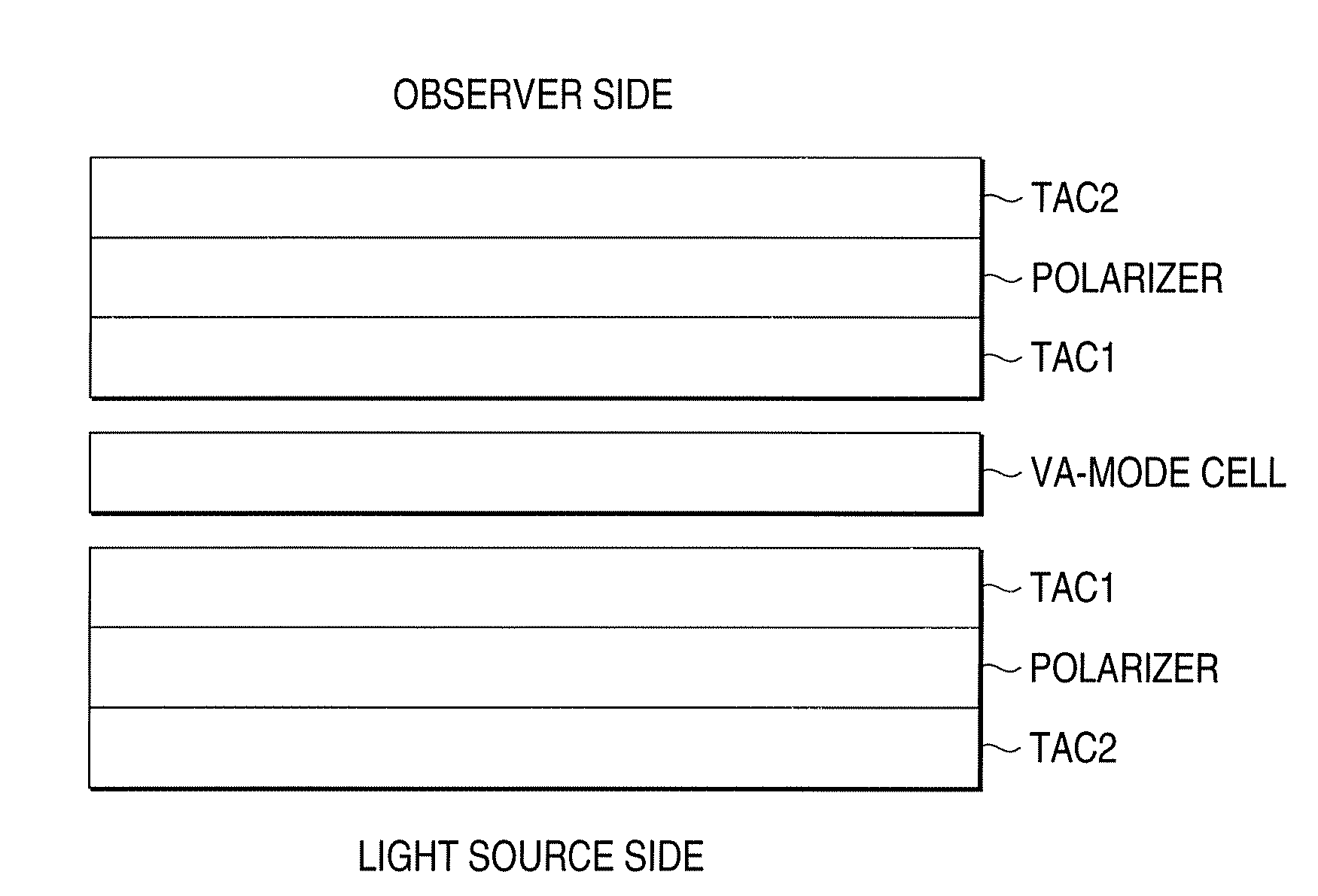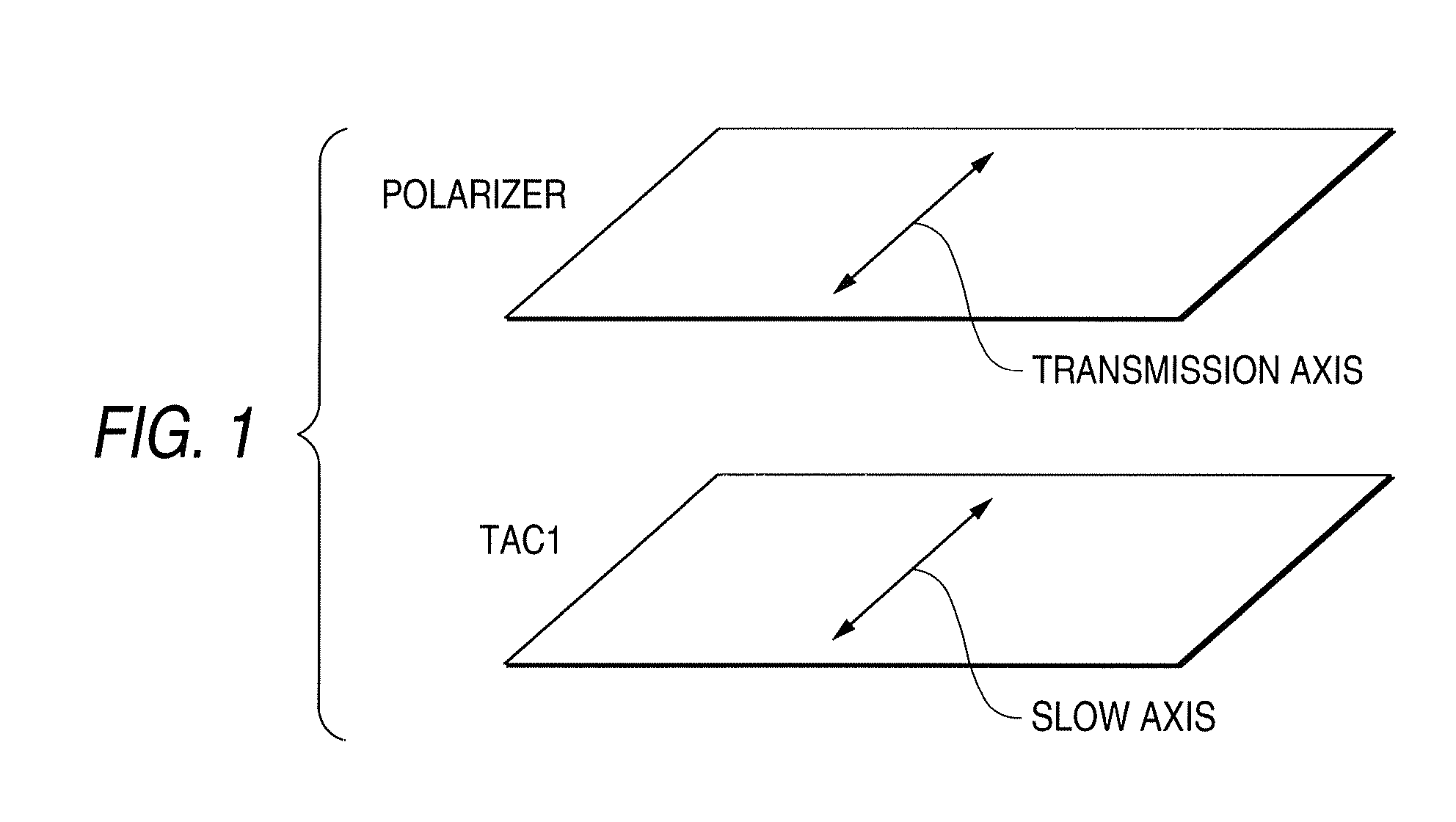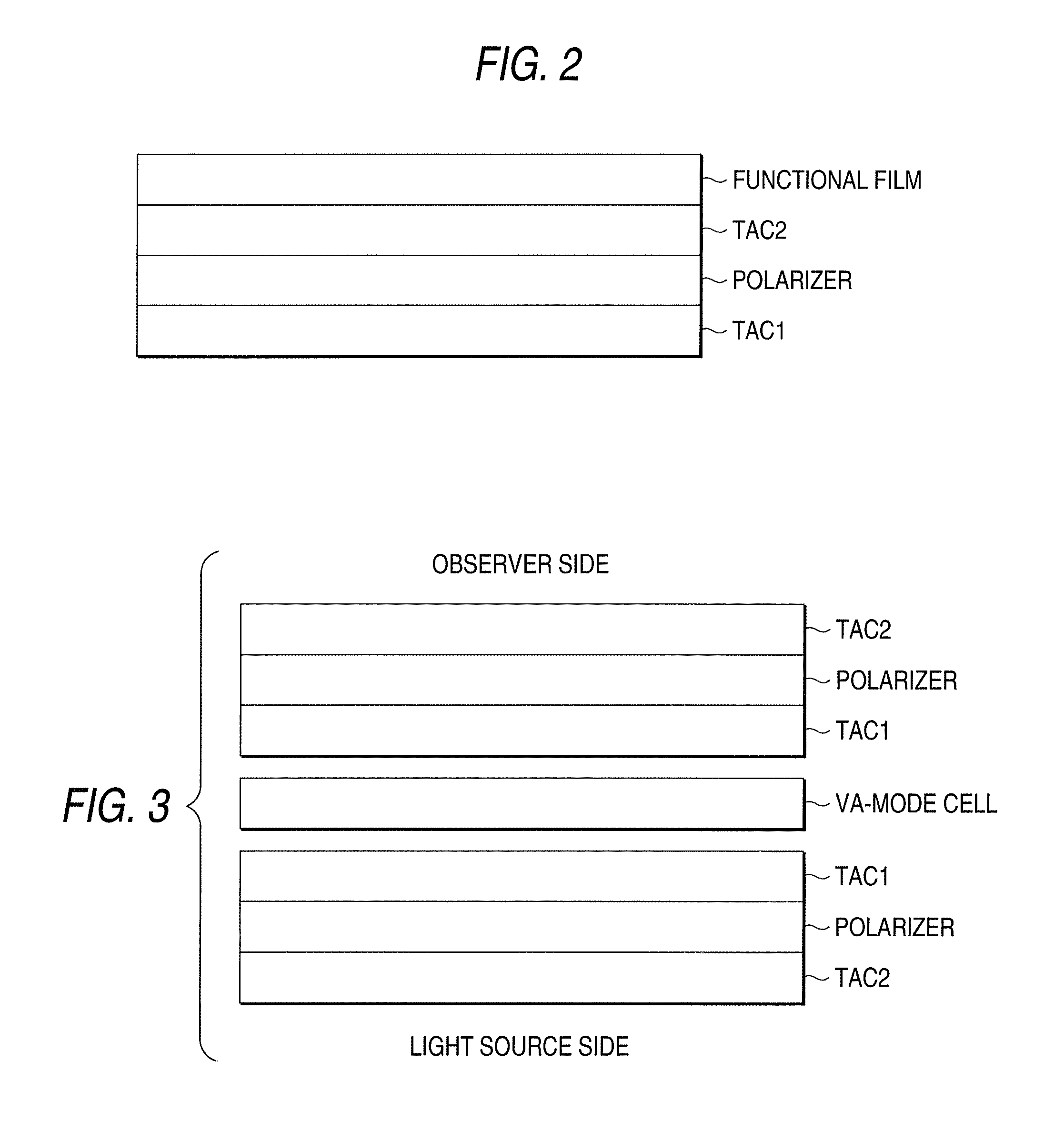Cellulose Acylate Film, Polarizing Plate and Liquid Crystal Display Device Using the Same
a technology of cellulose acylate film and polarizing plate, which is applied in the direction of cellulosic plastic layered products, instruments, synthetic resin layered products, etc., can solve the problems of mixed fatty acid cellulose ester having an acetyl/propionyl group and undesirable mechanical strength of the film, and achieve excellent retardation developmentability, reduce optical unevenness, and large area
- Summary
- Abstract
- Description
- Claims
- Application Information
AI Technical Summary
Benefits of technology
Problems solved by technology
Method used
Image
Examples
example 1
Production of Cellose Acylate Film
(Cellulose Acylate)
[0364]Cellulose acylates differing in the kind of acyl group and the acyl substitution degree, shown in Table 1, were prepared. These cellulose acylates were obtained by adding a sulfuric acid (7.8 parts by mass per 100 parts by mass of cellulose) as a catalyst, adding a carboxylic acid working out to a raw material of the acyl substituent, and performing an acylation reaction at 40° C. Thereafter, the total substitution degree was adjusted by adjusting the amount of the sulfuric acid catalyst, the amount of water, and the ripening time. The ripening was performed at a temperature of 40° C. Furthermore, the low molecular weight components of the cellulose acylate were removed by the washing with acetone.
(Preparing Cellulose Acylate Solution)
[0365]The cellulose acylate composition shown below was charged into a mixing tank and stirred to dissolve respective components, and the resulting solution was heated at 90° C. for about 10 mi...
example 2
Production of Polarizing Plate
[0395]Iodine was adsorbed to a stretched polyvinyl alcohol film to produce a polarizer. The cellulose acylate film produced in Example 1 (Samples 305, 403 and 409 and Comparative Samples 032 and 041; corresponding to TAC1 of FIGS. 1 to 3) was laminated to one side of the polarizer similarly to TAC1 of FIG. 2 by using a polyvinyl alcohol-based adhesive. Here, the saponification treatment was performed under the following conditions.
[0396]An aqueous solution containing 1.5 mol / liter of sodium hydroxide was prepared and kept at 55° C. Also, an aqueous solution containing 0.005 mol / liter of dilute sulfuric acid was prepared and kept at 35° C. The cellulose acylate film produced was dipped in the aqueous sodium hydroxide solution prepared above for 2 minutes and then dipped in water to thoroughly wash out the aqueous sodium hydroxide solution. Subsequently, the film was dipped in the aqueous dilute sulfuric acid solution prepared above for 1 minute and then ...
example 3-1
Mounting to VA Panel (Two-Sheet Type)
[0427]A liquid crystal display device of FIG. 3 was produced. That is, an upper polarizing plate (TAC2 (with or without functional film), polarizer, TAC1), a VA-mode liquid crystal cell (upper substrate, liquid crystal layer, lower substrate) and a lower polarizing plate (TAC1, polarizer, TAC2) were stacked in order from the viewing direction (top), and a backlight source was further disposed.
[0428]The liquid crystal cell was produced by setting the cell gap between the substrates to 3.6 μm, injecting dropwise a liquid crystal material (“MLC6608”, produced by Merck) having a negative dielectric anisotropy between the substrates, and sealing the gap to form a liquid crystal layer between the substrates. The retardation (that is, a product Δn·d of the thickness d (μm) of the liquid crystal layer and the refractive index anisotropy Δn) of the liquid crystal layer was set to 300 nm. Incidentally, the liquid crystal material was oriented in the vertic...
PUM
| Property | Measurement | Unit |
|---|---|---|
| width | aaaaa | aaaaa |
| RH | aaaaa | aaaaa |
| thickness | aaaaa | aaaaa |
Abstract
Description
Claims
Application Information
 Login to View More
Login to View More - R&D
- Intellectual Property
- Life Sciences
- Materials
- Tech Scout
- Unparalleled Data Quality
- Higher Quality Content
- 60% Fewer Hallucinations
Browse by: Latest US Patents, China's latest patents, Technical Efficacy Thesaurus, Application Domain, Technology Topic, Popular Technical Reports.
© 2025 PatSnap. All rights reserved.Legal|Privacy policy|Modern Slavery Act Transparency Statement|Sitemap|About US| Contact US: help@patsnap.com



